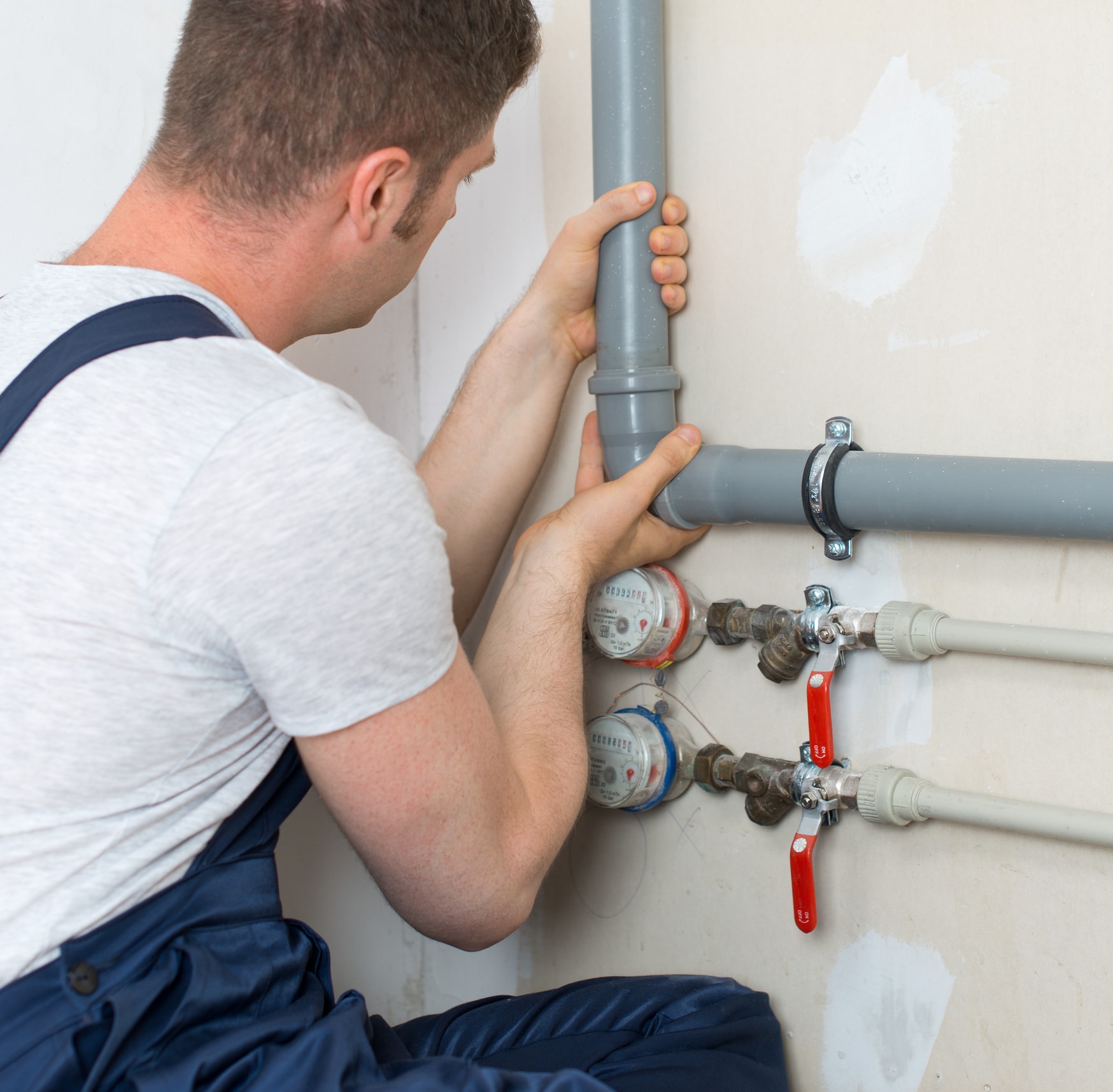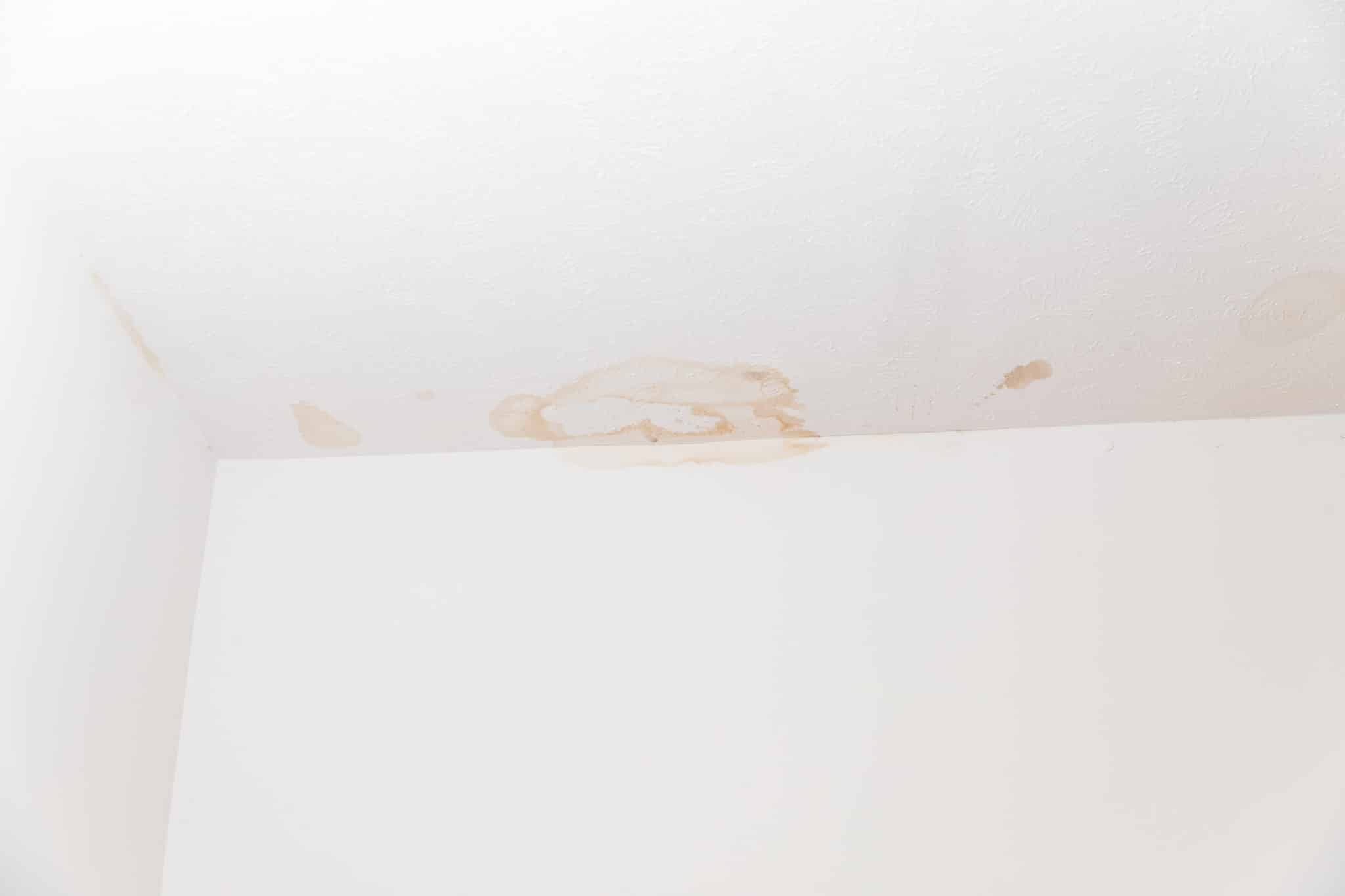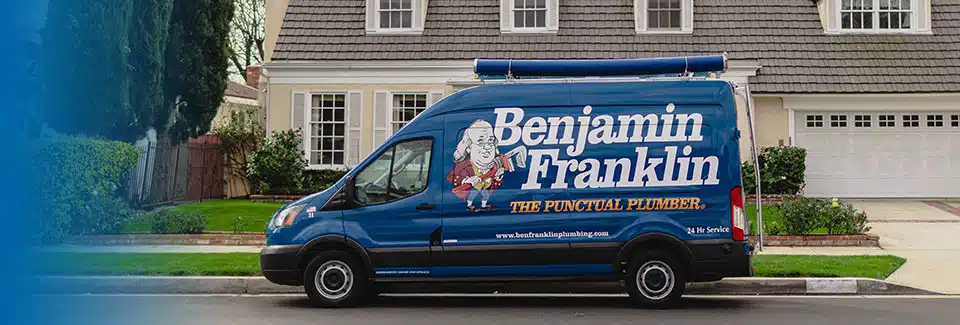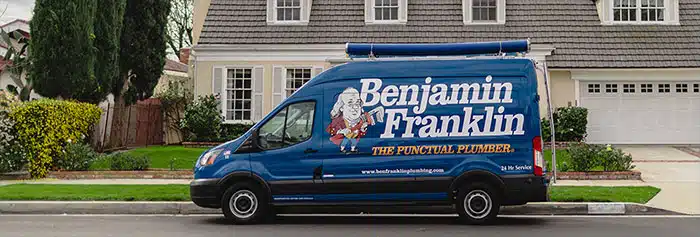In the heart of Arizona, where the sun relentlessly beats down, homeowners face a myriad of challenges, not least of which is pipe damage from humidity. This issue, prevalent in areas like Phoenix, Buckeye, and Scottsdale, AZ, often sneaks up on residents, catching many off guard. The combination of high temperatures and humidity levels creates the perfect storm for condensation on pipes, leading to a range of problems from rust to corrosion. Understanding the signs and preventive measures is crucial for maintaining a healthy plumbing system.
At Benjamin Franklin Plumbing of Phoenix, AZ, we’ve seen firsthand the effects of humidity on plumbing. When warm air meets the cold surface of water pipes, condensation forms, initiating the process of pipe sweating. This phenomenon not only weakens pipe joints and supports but can also cause moisture damage to surrounding areas. It’s a common yet overlooked issue that can escalate into costly repairs if not addressed promptly.
Fortunately, there are effective strategies to combat pipe damage from humidity. Proper insulation and ventilation play pivotal roles in reducing moisture buildup around pipes. By taking proactive steps, homeowners in Phoenix, Buckeye, and Scottsdale can safeguard their plumbing systems against the adverse effects of humidity. It’s about creating an environment where pipes can withstand the challenges posed by Arizona’s unique climate.
Our team at Benjamin Franklin Plumbing is committed to helping you protect your home from the ravages of humidity. With the right knowledge and tools, preventing pipe damage from humidity is entirely achievable. Stay tuned as we delve deeper into how to keep your plumbing system resilient against the humid conditions of Arizona, ensuring your home remains safe and dry all year round.
Understanding Pipe Damage From Humidity
Understanding the intricacies of pipe damage from humidity is vital for homeowners in places like Phoenix, Buckeye, and Scottsdale, AZ. This kind of damage often starts with the seemingly harmless phenomenon of pipe sweating. When the air’s moisture clings to the cooler surface of water pipes, it lays the groundwork for potential issues. Over time, this moisture can lead to rust, corrosion, and even the weakening of the pipe’s structure.
To combat this, one of the first steps is to ensure your pipes are properly insulated. Insulation acts as a barrier between the warm air and the cold surface of the pipes, significantly reducing condensation. This can be particularly effective in areas prone to high humidity levels, safeguarding your plumbing system from unnecessary wear. Moreover, insulation can help maintain the temperature of the water inside the pipes, contributing to energy efficiency.
Ventilation is another critical factor in preventing pipe damage from humidity. By promoting good airflow, you can reduce the amount of moisture in the air, which in turn lessens the risk of condensation on your pipes. Strategic placement of vents, especially in areas like basements and crawl spaces where humidity tends to accumulate, can make a significant difference. It’s about creating an environment that minimizes the conditions conducive to pipe sweating.
Lastly, regular maintenance and inspections are key to catching any signs of humidity damage early. By keeping an eye on your plumbing system, you can address minor issues before they escalate into major problems. Homeowners in Phoenix, Buckeye, and Scottsdale, AZ, can rely on professionals like those at Benjamin Franklin Plumbing to provide expert advice and service. Taking these proactive steps can save you from the hassle and expense of dealing with pipe damage from humidity.
The Science Behind Condensation on Pipes
To understand how to prevent pipe damage from humidity, it’s essential to grasp the science behind condensation on pipes. When warm, humid air encounters the cooler surface of a water pipe, the air’s moisture content condenses into liquid form. This process is similar to how a cold glass of water “sweats” on a hot day. As a result, the pipes become wet, setting the stage for potential damage.
In areas like Scottsdale, AZ, where temperatures can soar, the difference between the air and water temperature in pipes is often significant. This disparity accelerates condensation, increasing the risk of pipe damage from humidity. By recognizing this, homeowners can take targeted steps to mitigate these effects. Proper insulation and ventilation, therefore, become crucial in managing the humidity levels around pipes.
Furthermore, the materials used in your plumbing system play a role in how susceptible it is to humidity-related damage. Metals, for instance, are more prone to rust and corrosion when exposed to constant moisture. In contrast, plastic pipes might not rust, but they can still suffer from the weakening of joints and supports. Knowing what your pipes are made of can help in choosing the most effective preventive measures.
Regular checks and maintenance become indispensable in Buckeye, AZ, and similar locales. Homeowners should look for signs of excessive condensation or moisture around pipes. Early detection allows for prompt action, preventing the escalation of pipe damage from humidity. Engaging professionals for periodic inspections ensures that your plumbing system remains robust against the challenges posed by Arizona’s climate.

Preventive Measures for Humidity-Induced Corrosion
Taking preventive measures against humidity-induced corrosion is crucial for homeowners in Phoenix, Buckeye, and Scottsdale, AZ. One effective strategy is the use of dehumidifiers in areas prone to high moisture levels, such as basements and crawl spaces. These devices help maintain a dry environment, significantly reducing the risk of condensation on pipes. By controlling the humidity in your home, you can prevent the onset of pipe damage from humidity.
Another essential step is to upgrade or repair your home’s insulation, especially around pipes. Proper insulation not only prevents condensation but also enhances energy efficiency by maintaining the desired temperature of water within the pipes. This is particularly important in areas like Scottsdale, AZ, where temperature differences can be extreme. Insulating your pipes is a proactive approach to safeguard against the detrimental effects of humidity.
Regular plumbing inspections are also key in preventing humidity-related pipe damage. Professionals can identify potential problem areas and recommend solutions before minor issues escalate into major repairs. In Buckeye, AZ, for instance, routine checks can reveal early signs of corrosion or moisture damage, allowing for timely interventions. This practice ensures the longevity and reliability of your plumbing system.
Finally, consider the installation of pipe sleeves or wraps as an additional layer of protection. These materials are designed to shield pipes from the harsh effects of humidity, further reducing the likelihood of corrosion and rust. Whether in Phoenix or any other part of Arizona, taking these preventive steps can significantly mitigate the risk of pipe damage from humidity, keeping your home safe and your plumbing system in optimal condition.
The Role of Insulation in Combatting Pipe Sweat
Insulation stands as a frontline defense against pipe damage from humidity, particularly in homes throughout Phoenix, Buckeye, and Scottsdale, AZ. By wrapping pipes with the right materials, homeowners can effectively block the warm, moist air from coming into direct contact with cold water lines. This action significantly reduces condensation, which is a primary contributor to the weakening of pipes and supports. As a result, the risk of moisture-related damage in and around plumbing systems is greatly minimized.
In Scottsdale, AZ, where the climate can shift from hot days to cooler nights, the importance of insulation becomes even more pronounced. Properly insulated pipes maintain a more consistent temperature, thereby preventing the drastic temperature differences that lead to condensation. This not only protects the pipes themselves but also contributes to a more efficient plumbing system overall. Energy savings are an added benefit, as insulated pipes reduce the need for water to be reheated.
Beyond insulation, homeowners should also consider the overall health of their plumbing system to combat pipe damage from humidity. Regular maintenance checks can uncover early signs of moisture damage or areas where insulation may need to be replaced or upgraded. Such proactive measures ensure that small issues can be addressed before they escalate into major problems, saving time and money in the long run.
Finally, for residents in Buckeye, AZ, and surrounding areas, consulting with plumbing professionals offers an opportunity to gain tailored advice. Experts can recommend the best types of insulation for specific homes and plumbing setups, ensuring that homeowners can effectively combat pipe damage from humidity. By following these guidelines, maintaining a dry and damage-free plumbing system becomes a more achievable goal for Arizona homeowners.
Ventilation Solutions to Reduce Moisture Buildup
Ventilation plays a crucial role in combating pipe damage from humidity, especially in homes throughout Arizona. By improving airflow, homeowners can significantly decrease moisture levels in the air, thus reducing condensation on cold water pipes. In Buckeye, AZ, where the climate can contribute to indoor humidity, installing additional vents or fans in key areas like basements and attics helps maintain drier conditions. This proactive step is essential in preventing the moisture buildup that leads to pipe corrosion and rust.
In Scottsdale, AZ, leveraging natural ventilation can also be an effective strategy. Opening windows during cooler parts of the day allows for cross-ventilation, which helps to clear out humid air and bring in drier air from outside. It’s a simple yet effective method to keep humidity at bay and protect your plumbing system. Ensuring that your home has adequate airflow can make a significant difference in the battle against pipe damage from humidity.
Another important aspect of reducing moisture buildup is the use of exhaust fans in kitchens and bathrooms. These areas are hotspots for humidity due to activities like cooking and showering. Installing high-quality exhaust fans can quickly remove moist air, directly combating the conditions that lead to pipe sweating. For homeowners looking to safeguard their plumbing, investing in efficient exhaust systems is a wise choice.
Lastly, regular checks of your home’s ventilation system can prevent unforeseen issues related to humidity. Ensuring that vents are clear of obstructions and that fans are working properly are key steps in maintaining optimal airflow. This vigilance helps in keeping indoor humidity levels low, thereby protecting your pipes from the damaging effects of condensation. With these measures in place, homeowners can effectively reduce the risk of pipe damage from humidity.

Identifying Early Signs of Humidity Damage to Pipes
Identifying early signs of pipe damage from humidity is crucial for homeowners in Phoenix, AZ, and surrounding areas. By catching these signs early, you can prevent more extensive damage. Look for unusual wet spots on walls or ceilings, which may indicate condensation from sweating pipes. This is often one of the first indicators that the humidity levels in your home are affecting your plumbing.
In Buckeye, AZ, another sign to watch for is the presence of mold or mildew near plumbing fixtures. These fungi thrive in moist environments, suggesting that humidity is causing undue moisture around your pipes. If you notice a musty smell or visible mold growth, it’s time to inspect your plumbing for potential humidity damage. Taking action at this stage can save you from more significant issues down the line.
Rust or corrosion on pipes is a clear sign of pipe damage from humidity, especially in areas like Scottsdale, AZ. Metal pipes are particularly susceptible to this type of damage when exposed to constant moisture. If you observe any discoloration or flaking on your pipes, it’s essential to address it promptly. Ignoring these signs could lead to leaks or a complete failure of the plumbing system.
Finally, listen for unusual noises coming from your pipes, such as dripping or clanking, which may indicate that humidity has weakened pipe joints or supports. These sounds can be more than just a nuisance, they might signal that your plumbing system is under stress from moisture damage. Regular checks and early intervention are key to preventing serious pipe damage from humidity.
Professional Solutions for Pipe Damage From Humidity
When it comes to addressing pipe damage from humidity, homeowners in Phoenix, AZ, can benefit greatly from professional solutions. Experts like those at Benjamin Franklin Plumbing possess the tools and expertise necessary to effectively tackle this issue. They can provide comprehensive inspections, identifying areas where humidity may be causing harm to your plumbing system. Their targeted approach ensures that every nook and cranny is checked, preventing potential damage before it escalates.
In Buckeye, AZ, professional plumbers offer specialized insulation and ventilation services designed to combat the effects of humidity. They know exactly what type of insulation is best suited for your home’s specific needs, ensuring your pipes are well-protected against condensation. Additionally, they can optimize your home’s ventilation, creating an environment less conducive to moisture buildup. This dual approach not only addresses current issues but also acts as a preventive measure against future problems.
Another advantage of seeking professional help is access to the latest technology and materials for combating pipe damage from humidity. In Scottsdale, AZ, for example, plumbers might use moisture-resistant materials and advanced sealing techniques to further safeguard your plumbing. These modern solutions offer superior protection, ensuring your pipes remain in top condition despite the challenges posed by high humidity levels. With professionals on your side, you can rest easy knowing the most effective and up-to-date methods are being used to protect your home.
Lastly, regular maintenance by a professional can save homeowners from the headaches of unexpected repairs due to pipe damage from humidity. They can schedule periodic checks to monitor the condition of your pipes and make necessary adjustments to insulation and ventilation systems. This proactive approach helps in catching potential issues early, significantly reducing the risk of costly damage. By partnering with a trusted plumbing service, you ensure your home remains safe and dry, free from the adverse effects of humidity.
When to Call a Professional Plumber
Understanding when to call a professional plumber is crucial in managing pipe damage from humidity effectively. Homeowners in Buckeye, AZ, should be vigilant about the signs of humidity affecting their plumbing. If insulation or ventilation adjustments don’t seem to mitigate the issue, it’s time to seek expert advice. Professional plumbers have the skills and tools to assess and rectify the problem efficiently, preventing further damage.
In Scottsdale, AZ, the climate can exacerbate humidity issues, making professional intervention even more pertinent. When you notice persistent condensation, mold growth, or corrosion on pipes despite taking preventive measures, a plumber’s expertise becomes invaluable. They can offer solutions tailored to your home’s specific needs, ensuring long-lasting protection against humidity-related damage. This proactive step can save you from costly repairs down the line.
Professionals not only address current pipe damage from humidity but also help in preventing future issues. They can recommend upgrades or changes to your plumbing system that you might not have considered. For instance, installing moisture-resistant materials or improving your home’s overall ventilation can make a significant difference. These adjustments contribute to a healthier, drier environment, safeguarding your plumbing infrastructure.
Lastly, establishing a relationship with a trusted plumbing service offers peace of mind. Regular maintenance checks by professionals can catch early signs of pipe damage from humidity, allowing for timely interventions. This approach minimizes the risk of extensive damage, keeping your plumbing system in optimal condition. For homeowners looking to protect their investment, calling a professional plumber at the right time is a wise decision.
Frequently Asked Questions
What causes pipe damage from humidity?
Pipe damage from humidity occurs when warm, moist air meets cooler water lines. This interaction leads to condensation on the pipes. Over time, the moisture can cause rust and corrosion, weakening the pipe’s structure. Proper insulation and ventilation are key to preventing this type of damage.
How can I prevent pipe damage?
To prevent pipe damage from humidity, ensure your home has proper insulation around water lines. Installing a dehumidifier can also reduce air moisture, protecting pipes from condensation. Regularly check your plumbing for early signs of moisture damage to address issues promptly. Additionally, improving ventilation in areas prone to dampness can significantly decrease the risk of pipe damage.
What are signs of pipe damage from humidity?
Signs of pipe damage from humidity include visible rust and corrosion on the pipes. You might also notice moisture buildup or water spots near plumbing fixtures. Another clue is a musty smell, indicating mold growth from excess moisture. Lastly, weakening pipe joints or supports can signal advancing damage, requiring prompt attention.
Can insulation help prevent pipe damage?
Absolutely, insulation plays a crucial role in preventing pipe damage from humidity. By wrapping water lines with insulating material, it keeps the pipe surface closer to the water’s temperature inside, reducing condensation. This not only protects the pipes from corrosion but also saves energy by maintaining the water temperature. Regularly inspecting and updating insulation ensures your plumbing remains safe from the damaging effects of humidity.
How often should pipes be checked for damage?
To keep your pipes in top condition, it’s wise to inspect them for signs of damage annually. This routine check helps catch early symptoms of humidity-related issues before they escalate. During Arizona’s humid months, a mid-year review can also be beneficial. By staying proactive, homeowners can avoid costly repairs and maintain their plumbing’s integrity.


